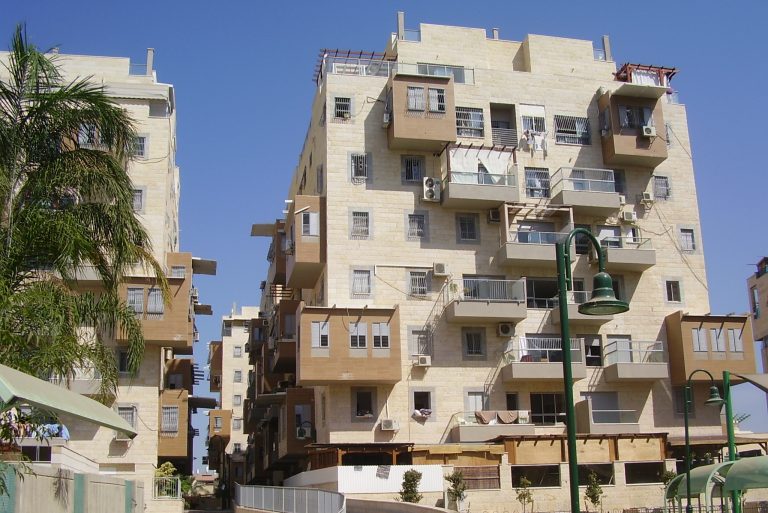 1. Note that the twenty “amot” mentioned above as the maximum height of the Sukkah are measured from the surface on which the Sukkah stands, not necessarily from the ground. Thus, if for example Sukkot are built on top of a city skyscraper or the Shalom Tower in Tel Aviv, and the height of the Sukkah itself is, say, ten “amot.” The Sukkot are perfectly “kosher,” or valid, and the heights of those two skyscrapers are temporarily augmented by the amount of ten “amot” for the duration of Sukkot.
1. Note that the twenty “amot” mentioned above as the maximum height of the Sukkah are measured from the surface on which the Sukkah stands, not necessarily from the ground. Thus, if for example Sukkot are built on top of a city skyscraper or the Shalom Tower in Tel Aviv, and the height of the Sukkah itself is, say, ten “amot.” The Sukkot are perfectly “kosher,” or valid, and the heights of those two skyscrapers are temporarily augmented by the amount of ten “amot” for the duration of Sukkot.
2. One can make a valid Sukkah on the top of a wagon in motion, or on the top deck of a ship at sail; or for that matter, on the back of a flatbed truck traveling along a superhighway or the wing of a v–e–r–y s–l–o–w airplane in flight. The above statement is true despite the fact that the Sukkah is in motion with respect to the ground in the case of the wagon, and the ocean in the case of the ship, the highway or the air in the last two cases.
That motion is irrelevant! Why so? Because in all the cases, the Sukkah is at rest with respect to the wagon or the ship or the truck or the wing. That means that the Sukkah is not moving around on the wagon, or on the deck of the ship; it is not skipping around on the back of the truck, or scampering back and forth on the wing. Rather, it is quite still. And from the point of view of the occupants of the Sukkah, it is just as if the Sukkah were at rest in their own backyard!
It is for the same reason that a person inside a plane can walk leisurely along the aisle of a jet plane traveling smoothly through the air at 600 miles per hour. “Not to beat a dead horse,” on whose back if it were alive, one could also construct a minimum-size Sukkah, It is because the occupants of the Sukkah as well as the passengers on the jet are traveling at the same speed as the Sukkah or the jet.
3. Speaking of constructing Sukkot on the backs of animals, the Talmud does also address the question of making one on the back of a camel. The conclusion is that the Sukkah would be valid, for the reasons given above, except that one could not climb up into it on the first days of the Holiday, because of a side reason. The Sages enacted a “gezeirah” against riding on animals on Shabbat and the Holidays, out of concern lest a rider unwittingly break off a branch as he or she rode along an overgrown trail, and that (the breaking of the branch) would be a violation of a “Melacha.”

